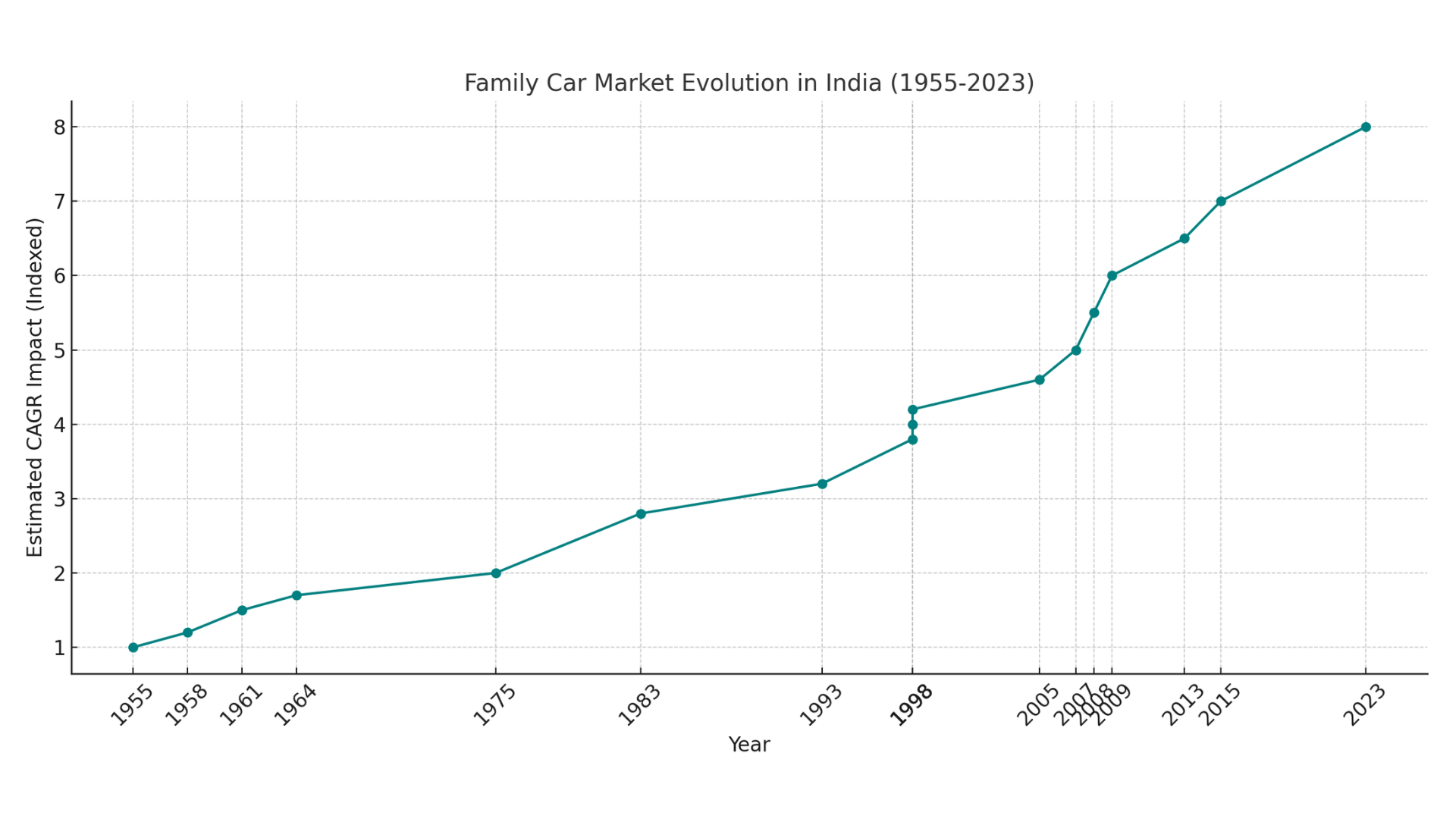
Family Car Evolution in India (1955–2023): A Journey on Four Wheels
Introduction
The story of India’s automotive journey is not just about wheels and engines—it’s a tale of aspiration, mobility, and transformation. From humble beginnings in the 1950s to the dynamic and tech-savvy models of today, Indian families have witnessed a generational shift in the way they drive, travel, and live.
At Robas Research, we believe that understanding consumer preferences and industry evolution is essential for mapping future strategies. Let’s take you through a nostalgic drive down the timeline of family cars that redefined the Indian roads from 1955 to 2023.
The Evolution Timeline: From Heritage to Innovation
1955 – Fiat 1100
The car that introduced Indian middle-class families to modern motoring. Sleek, compact, and stylish, the Fiat 1100 became a symbol of affluence and European design.
1958 – Hindustan Ambassador
The true king of Indian roads. Inspired by the British Morris Oxford, the Ambassador ruled for decades, ferrying politicians, families, and taxi passengers alike.
1961 – Standard Herald
Another British legacy, the Herald stood out with its convertible versions and European design appeal.
1964 – Standard Gazel
A follow-up to the Herald, Gazel marked Standard Motors’ attempt to localize production but struggled against tougher competition.
1975 – Premier Padmini
Compact, stylish, and fuel-efficient—Padmini became Mumbai’s cab identity and every urban family’s go-to choice in the late ’70s and ’80s.
The 2010s: Tech-Savvy and Aspirational
2013 – Hyundai Grand i10
Bigger, better, and smarter—the Grand i10 added premium touches to compact car segments.
2015 – Maruti Baleno
A premium hatchback with a strong design, the Baleno marked Maruti’s shift toward more stylish and feature-rich offerings.
2023 – Suzuki Fronx
A modern crossover born to blend hatchback practicality with SUV boldness. The Fronx represents the current family preference—premium, connected, and versatile.
CAGR Graph: Car Market Growth Trajectory (1955–2023)
Here’s a visual representation of how the family car market evolved over the decades in India:
The estimated market growth has seen a significant uptrend, especially post-liberalization in the 1990s and with the entry of foreign players, peaking as technology, affordability, and aspirations aligned.
Observations from the Journey
Legacy to Local: We started with foreign designs and gradually moved to Indian innovations (Tata, Mahindra).
Compact to Premium: Early needs were affordability and fuel efficiency. Now, the desire includes design, tech, and safety.
Global Influence: From Fiat to Hyundai and Suzuki, foreign collaborations shaped consumer expectations.
Shift in Preferences: SUV-inspired designs and electric mobility are shaping the next era.
Conclusion
From the Fiat 1100 to Suzuki Fronx, Indian family cars have come a long way—both in form and function. The journey reflects not just technological progress but also socio-economic aspirations of Indian households.
As we move toward electric mobility and AI-driven features, the next wave of family cars will be defined by sustainability, safety, and seamless connectivity.


